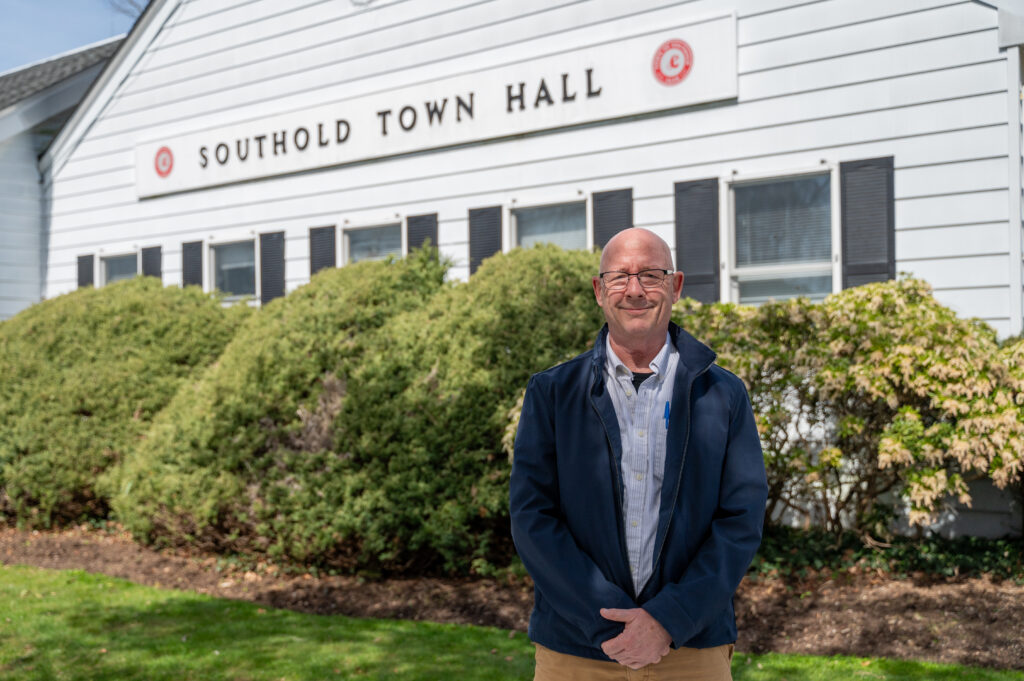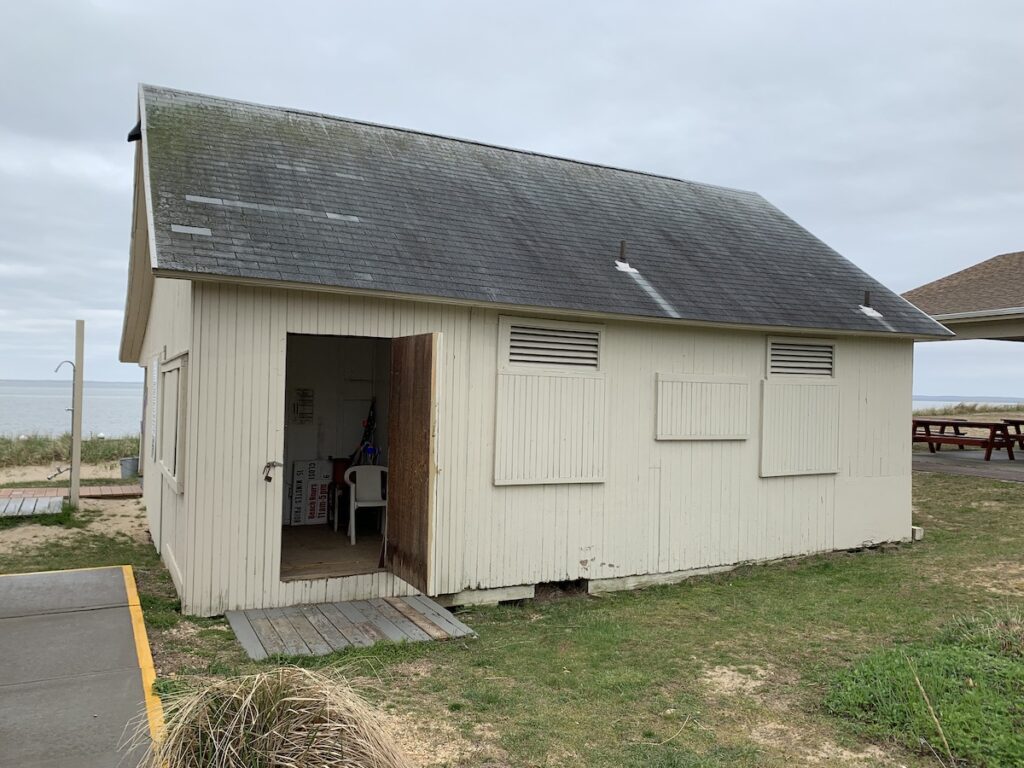Two lives saved in the Sound

Thursday, July 6, was a classic North Fork summer day on Long Island Sound. The sky was robin’s-egg blue, the water flat, with a light southwest breeze. You could see for miles across the water to the gray Connecticut coastline.
The calm of a beautiful summer afternoon changed at about 5:10 p.m.
Benjamin Grodski, 18, of Riverhead and three friends, all 16 years old, were aboard a 23-foot Grady-White two to three miles northwest of Duck Pond Point in Cutchogue when the propeller of its outboard motor became entangled with the anchor line.
Moments earlier, two of the passengers on board — a boy and a girl — had jumped overboard for a late-afternoon swim. Neither was wearing a life jacket. Unaware of the strong current of a falling tide, they were quickly drifting away from the boat. Unable to start the outboard to go pick up his friends, Benjamin dialed 911 to report that his boat was disabled and he needed help.
What transpired on Long Island Sound in the next 50 or so minutes is a testament to the dedication of first responders, the level of their training and their zeal to save lives. Only Benjamin Grodski’s name appears in a police report; the three 16-year-olds are listed as juveniles. Benjamin could not be reached for comment by press time.
The recorded voices of Southold Town police dispatchers Michael Boken and Donna Lane as the crisis unfolded demonstrate how they juggled multiple phone calls, managed radio traffic and coordinated the various rescue components to bring the incident a successful conclusion that in real time seemed improbable.
All the many parties involved that day ran a master class in dedication and highlighted the critical importance of training. Four of those who reached the disabled boat and the teenagers in the water are members of the Cutchogue Fire Department and its water rescue team: Capt. Joe Hinton, Lt. Christian Figurniak, Lt. Ken Pearsall and Lt. Bryan Zissel.
They launched a Zodiac from the beach at Duck Pond Point while town officers scanned the Sound from various locations searching for the two teenagers and awaited the arrival of a Suffolk County police helicopter.
Southold Police Chief Martin Flatley was enjoying the afternoon at McCabes Beach with his wife when his cellphone went off. “It was our captain, and he was advising what was going on in the water. A boat was disabled and two occupants were in the water and drifting away without life jackets on,” he recalled.
“Then it was a matter of the dispatchers doing such a great job,” he added. “They were trying to get a good location of the boat. The boy on board knew he was off Cutchogue. The dispatchers got him to calm down and get the GPS of the boat. He gave us that.
“Then it was a matter of getting everyone involved — the fire department, our marine units, county aviation, the Coast Guard,” the chief continued. “And it all had to happen very quickly if the two people in the water were to be rescued.”
From Mattituck Inlet, Southold harbor master John Kirincic and Det. Roman Wilinski, set out northeast into the Sound in search of the Grady-White. All within a few minutes of each other, Capt. Hinton, Lt. Figurniak, Lt. Pearsall and Lt. Zissel, set out in their department’s Zodiac they launched from the beach at Duck Pond Point.
It was now about 5:30, 20 minutes after the initial 911 call. At approximately 5:46, the Zodiac reached the Grady-White. The two still on board were okay. With the two teenagers floating somewhere to the east in the wide expanse of the Sound on a rapidly falling tide, the Zodiac set out to find them. Time was critical.
As can be heard in the recording of radio traffic at Southold police headquarters, Mr. Boken and Ms. Lane went back and forth among all the parties, at one point recommending that Benjamin shoot up a flare so responding parties could see them. Listening now, the dispatchers’ sound like two people trying to keep a dozen plates in the air, allowing none to hit the ground.
Seated in the radio room at the Cutchogue Fire Department Tuesday morning, Lt. Zissel, Lt. Figurniak, Capt. Hinton and department Chief Bill Brewer spoke about the rescue in the calm voices of people who are trained for just such a crisis — although the three who set out to search were not sure they would find the teens alive.
“We got to the Grady-White and it was clear the two in the water were miles away,” Lt. Zissel said. “The male subject on the boat said his engine was disabled, his friends are in the water — and you have to find them. We told the two people on the boat to put on life jackets, which they had, and we immediately went out searching.”
And here is where the quartet’s water rescue training — Lt. Pearsall is also an EMT — kicked in.
“We needed to get the direction and speed of the current,” Lt. Zissel said. “We passed a number of lobster buoys and we could see the current was more northeast than due east. So we continued in that pattern. Joe put the boat in neutral to see the direction better. The speed of the outgoing tide was between two and three knots, so that told us how fast the two would be moving.”
The Zodiac began searching a wide expanse of Sound, guided by the direction and speed of the current. In his younger years, Capt. Hinton had worked on a lobster boat; he knew the difference between a buoy marking a trap and a human head. He also knows how to read the water, which was critical if they were to find the teenagers.
“The drift was so pronounced, and it was pointing in one direction for us to search,” said Lt. Pearsall. “We passed a number of lobster buoys and the water was ripping off those. But it all pointed us in the right direction.”
Capt. Hinton and Lt. Figurniak saw the boy first. He was clinging for dear life to a lobster buoy. Exhaustion was written on his face. His legs were cramped up. To the experienced eye of a first responder, it was clear that he would not be able hold on much longer. It was a situation when life itself can be counted in just minutes.
Lt. Zissel deployed a life ring and dove from the boat to hold on to the boy and keep his head above water.
The others continued in search of the girl — and located her just 200 yards farther east. She was afloat, her head bobbing above the waterline. “She was not physically hurt,” Lt Pearsall said.
“But she was completely exhausted,” Capt. Hinton added. “Her arm was out of the water so we could see her.”
“It was sheer joy for the four of us to find her,” Lt. Zissel added. “Absolute joy.”
Lt. Figurniak stressed that “this was a group effort all along, and every part of it worked perfectly.”
Capt. Hinton said, “It was absolutely wonderful to find them both.”
“Most people probably can’t tread water for more than 20 minutes,” said Lt. Pearsall. “And combine that with the sheer terror of being in the water like that. The water temperature was 73 degrees. A few degrees colder — if they’d gone for a swim later and it was dark when we got out there, or if the seas were rough —– the conclusion could have been very different.
“I am so proud of our department,” he added.
Chief Flatley said Mr. Boken and Ms. Lane will receive his Headquarters Recognition Award for their roles. “The work they did, when something like this happens, training is everything,” he said.
Looking back on the rescue, Chief Brewer — who is also a town police officer — reinforced the importance of having a trained personnel. To his mind, he said, the two in the water could easily have lost their lives.
“They were so exhausted,” he said. “They had not more than 10 minutes of fuel left in the tank. So many things had to go right. It all had to work to make this happen.”








